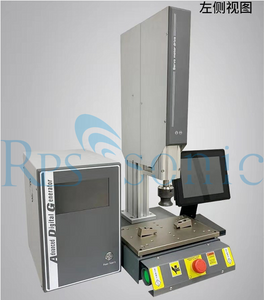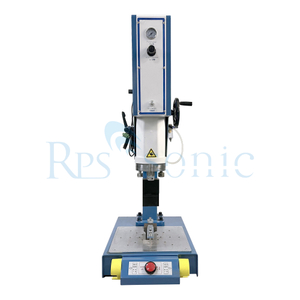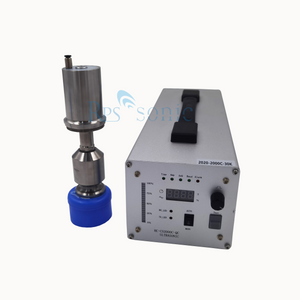What's The Ultrasonic Filter Welding Technology?
This is a crucial advanced joining technology in the filtration industry, primarily used in the manufacturing of various filters (such as air filters, oil filters, fuel filters, air conditioning filters, and water treatment filters). It perfectly replaces traditional methods like gluing and mechanical crimping, bringing about a qualitative leap.
I. What is ultrasonic filter element welding?
Ultrasonic filter element welding utilizes high-frequency ultrasonic vibrations to instantly generate frictional heat and melt the end caps and filter media (or other plastic components) at the contact interface. This fusion and solidification occurs under pressure, forming a high-strength, highly airtight molecular-level bond.
To put it simply: it's not like gluing (gluing) or staples (mechanically securing). Instead, it "melts" two plastic parts into a single, integrated unit.
II. Why is ultrasonic technology necessary for filter element welding?
Filter elements often operate in extremely harsh environments, requiring the following:
High sealing: Prevent unfiltered fluids (air, oil, fuel) from leaking through the interface, bypassing the filtration system and causing wear on the engine or equipment. For example, oil filters must be absolutely sealed under high pressure.
High structural strength: Withstands system pressure, vibration, and shock, preventing the end cap from falling off.
Media resistance: Resists corrosion from oil, fuel, chemical solvents, and other agents, which can dissolve adhesives and cause failure.
High and low temperature resistance: The engine compartment's ambient temperature fluctuates dramatically, causing adhesives to age, become brittle, or melt.
Environmentally friendly and clean: The absence of any chemical adhesives prevents contamination of the filter media and is more environmentally friendly.
Ultrasonic welding technology precisely meets all of these stringent requirements.
III. Typical Applications of Ultrasonic Filter Element Welding
Automotive Industry (Core Application Area)
Oil Filter: Welds a metal/plastic center tube, filter paper, and plastic end caps into a single piece.
Air filter: Seal the plastic end caps and filter media.
Fuel filter: Weld a multi-layer composite structure, requiring extremely high sealing to prevent fuel leaks.
Cabin air filter: Weld the plastic frame and filter media.
Industrial filtration
Water treatment filter elements (e.g., PP cotton filter elements): Weld the end caps and filter rods.
Chemical filter elements: Weld the end caps of chemically resistant plastic (e.g., PP).
Household appliances
Vacuum cleaner filter elements: Weld the plastic components and non-woven filter media.
Water purifier filter elements: Same as above.
Welding System and Key Process Points
A typical filter element welding system includes: an ultrasonic generator, transducer, amplitude modulator, welding head, and fixture.
Key Process Points:
Material Compatibility: Ultrasonic welding requires thermoplastics, such as polypropylene (PP), nylon (PA), and polyester (PET). PP is the most commonly used filter element material. The end cap and filter material (if containing plastic) must be compatible.
Welding Horn Design: The welding horn is the key tool for delivering energy, and its shape must precisely match the part to be welded. It is typically designed as a circular or polygonal shape, customized to the structure of the filter element end cap.
Energy Director: A tiny triangular protrusion (Energy Director) is pre-designed on the contact surface of the plastic part. Its function is to quickly concentrate ultrasonic energy there, causing it to melt preferentially, resulting in faster and more controllable welding.
Welding Parameters: Time, Pressure, and Energy are the three core parameters. Modern high-end welders typically use an energy mode as the termination criterion, meaning they stop when the output energy reaches the set value. This compensates for minor material variations and ensures weld consistency.
Fixture Design: The jig (fixture) must firmly secure the filter element components to prevent them from vibrating, wasting energy, or even damaging the product. The jig typically has a sealed air path inside for post-weld online airtightness testing.
Summary
Ultrasonic filter element welding is an efficient, reliable, clean, and high-performance permanent joining technology. It has revolutionized filter element manufacturing, enabling it to meet the extreme demands of modern industry, particularly the automotive industry, for high strength, tightness, and long life in filtration systems. It has now become an indispensable standard process for mid- to high-end filter element manufacturing.
 English
English










